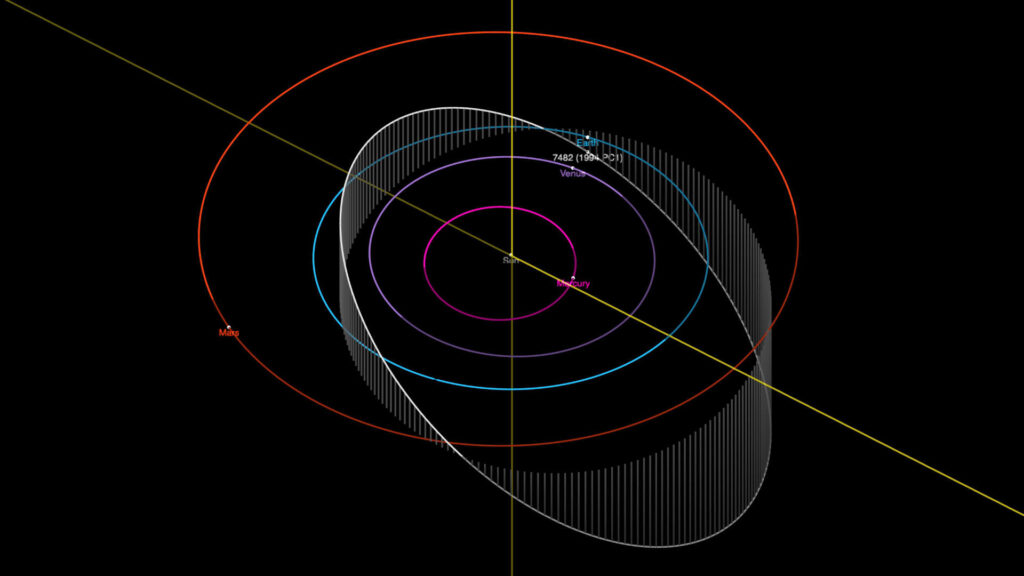The asteroid 1994 PC1 does pass through the Earth’s neighborhood on January 18, 2022. But almost 2 million kilometers from our planet. Nothing to worry about.
” An asteroid larger than Corcovado will pass Earth this month », « a giant asteroid is about to pass in front of the Earth », « a giant asteroid will graze Earth on Tuesday »… Look no further for the next giant-asteroid-planet-destroyer, here it is! It’s called 1994 PC1, but don’t panic: it will absolutely not hit, or even graze, our planet in January 2022.
The object in question has been known for almost 30 years. The asteroid was discovered in August 1994, from the Siding Spring observatory in Australia. It is an Apollo asteroid (which is quite common), whose orbit is larger than that of the Earth, but which can nevertheless cross it.
A safe passage at 5 times the Earth-Moon distance
This Tuesday, January 18,1994 PC1 will indeed pass through the terrestrial neighborhood, but it will in no way pass our planet. According to JPL data, it will pass at a distance of 0.01325 astronomical units, or about 1.93 million kilometers. For this comparison, an object is constantly much closer to the Earth, without representing a risk: the Moon, on average at 384,400 kilometers from us. We must multiply this distance by approximately 5, to obtain the distance that will separate us from1994 PC1 on January 18.
” Rest assured, 1994 PC1 will fly over safely our planet 1.2 million miles away on Tuesday, January 18 “confirmed NASA in a tweet January 12.
As ScienceAlert points out, the estimate of the asteroid’s distance was calculated with a small margin of error (133 km). So there is really no risk of collision.
It is however true that 1994 PC1 is classified in the category of potentially dangerous objects (there are two types, comets and asteroids). This group consists of objects whose minimum distance from Earth’s orbit is less than 0.05 astronomical units (7,480,000 km, about 19 times the Earth-Moon distance), and whose diameter is at least 150 meters.
This is indeed the case with1994 PC1, whose diameter is estimated at just over a kilometer (1.052 km). The following diagram shows its orbit in the solar system and its position relative to Earth.

The interest of this passage relatively close to January 18 is especially for professional or amateur astronomers, who thus have an opportunity to better observe the asteroid.1994 PC1 takes about 1 year and 7 months to orbit the Sun. During its approach on January 18, it must move at a speed of almost 20 kilometers per second. Its brightness should be too low to see with the naked eye or binoculars, but if you own a telescope, you can try your luck.
How to follow online the passage of the asteroid 1994 PC1 on January 18?
If you do not have any equipment, finally know that it is possible to follow the passage (without danger) of the asteroid live thanks to the Virtual Telescope. Head over to the project’s website or its YouTube page, starting at 9 p.m. — or play the video below.
